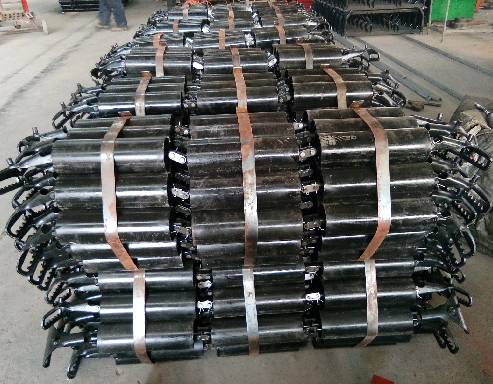 Afrikaans
Afrikaans  Albanian
Albanian  Amharic
Amharic  Arabic
Arabic  Armenian
Armenian  Azerbaijani
Azerbaijani  Basque
Basque  Belarusian
Belarusian  Bengali
Bengali  Bosnian
Bosnian  Bulgarian
Bulgarian  Catalan
Catalan  Cebuano
Cebuano  Corsican
Corsican  Croatian
Croatian  Czech
Czech  Danish
Danish  Dutch
Dutch  English
English  Esperanto
Esperanto  Estonian
Estonian  Finnish
Finnish  French
French  Frisian
Frisian  Galician
Galician  Georgian
Georgian  German
German  Greek
Greek  Gujarati
Gujarati  Haitian Creole
Haitian Creole  hausa
hausa  hawaiian
hawaiian  Hebrew
Hebrew  Hindi
Hindi  Miao
Miao  Hungarian
Hungarian  Icelandic
Icelandic  igbo
igbo  Indonesian
Indonesian  irish
irish  Italian
Italian  Japanese
Japanese  Javanese
Javanese  Kannada
Kannada  kazakh
kazakh  Khmer
Khmer  Rwandese
Rwandese  Korean
Korean  Kurdish
Kurdish  Kyrgyz
Kyrgyz  Lao
Lao  Latin
Latin  Latvian
Latvian  Lithuanian
Lithuanian  Luxembourgish
Luxembourgish  Macedonian
Macedonian  Malgashi
Malgashi  Malay
Malay  Malayalam
Malayalam  Maltese
Maltese  Maori
Maori  Marathi
Marathi  Mongolian
Mongolian  Myanmar
Myanmar  Nepali
Nepali  Norwegian
Norwegian  Norwegian
Norwegian  Occitan
Occitan  Pashto
Pashto  Persian
Persian  Polish
Polish  Portuguese
Portuguese  Punjabi
Punjabi  Romanian
Romanian  Russian
Russian  Samoan
Samoan  Scottish Gaelic
Scottish Gaelic  Serbian
Serbian  Sesotho
Sesotho  Shona
Shona  Sindhi
Sindhi  Sinhala
Sinhala  Slovak
Slovak  Slovenian
Slovenian  Somali
Somali  Spanish
Spanish  Sundanese
Sundanese  Swahili
Swahili  Swedish
Swedish  Tagalog
Tagalog  Tajik
Tajik  Tamil
Tamil  Tatar
Tatar  Telugu
Telugu  Thai
Thai  Turkish
Turkish  Turkmen
Turkmen  Ukrainian
Ukrainian  Urdu
Urdu  Uighur
Uighur  Uzbek
Uzbek  Vietnamese
Vietnamese  Welsh
Welsh  Bantu
Bantu  Yiddish
Yiddish  Yoruba
Yoruba  Zulu
Zulu febr. . 18, 2025 12:47
Back to list
Slagging Pulley(Heavy Duty)
Pulley systems in belt conveyors play a crucial role in the efficient and safe transport of materials across industrial settings. Understanding the various types can help in selecting the right system for specific applications, thereby boosting operational efficiency and minimizing downtime. This guide delves into different pulley types, showcasing real-world expertise and offering authoritative insights to establish trustworthiness in your decision-making.
Snub pulleys serve a specific purpose of increasing the contact angle of the belt with drive pulleys. This increased wrap results in higher traction and load-bearing capacity without exerting excessive strain on any single pulley. Using quality materials, a precise design, and regular maintenance can prevent snub pulley issues. Setting up in-depth pulley inspections involving experienced personnel helps in predicting failures and addressing them promptly, greatly enhancing operational trustworthiness. Selecting the right type of pulley demands a comprehensive understanding of conveyor load requirements, environmental conditions, and material characteristics. Expert-designed pulleys ensure minimal downtime, seamless operation, and optimized energy consumption. In addition, investing in automated monitoring systems to track pulley performance can avert unforeseen disruptions, ensuring productivity remains consistent. Further enhancing trust in a pulley system requires collaboration with an experienced provider who can offer detailed consultation, advanced materials, and cutting-edge technology. Companies benefit from a strategy that involves not just purchasing but also considering pulleys’ life cycle, likely wear factors, and future technological upgrades. Ultimately, each pulley type plays a distinctive role in a system's operational success. Their synchronized function, crafted with expertise and backed by continuous innovation, shapes the backbone of a reliable conveyor system. Investing in quality and customized solutions tailored to specific needs ensures that a company's material handling system remains viable, efficient, and competitive in the fast-paced industrial landscape.


Snub pulleys serve a specific purpose of increasing the contact angle of the belt with drive pulleys. This increased wrap results in higher traction and load-bearing capacity without exerting excessive strain on any single pulley. Using quality materials, a precise design, and regular maintenance can prevent snub pulley issues. Setting up in-depth pulley inspections involving experienced personnel helps in predicting failures and addressing them promptly, greatly enhancing operational trustworthiness. Selecting the right type of pulley demands a comprehensive understanding of conveyor load requirements, environmental conditions, and material characteristics. Expert-designed pulleys ensure minimal downtime, seamless operation, and optimized energy consumption. In addition, investing in automated monitoring systems to track pulley performance can avert unforeseen disruptions, ensuring productivity remains consistent. Further enhancing trust in a pulley system requires collaboration with an experienced provider who can offer detailed consultation, advanced materials, and cutting-edge technology. Companies benefit from a strategy that involves not just purchasing but also considering pulleys’ life cycle, likely wear factors, and future technological upgrades. Ultimately, each pulley type plays a distinctive role in a system's operational success. Their synchronized function, crafted with expertise and backed by continuous innovation, shapes the backbone of a reliable conveyor system. Investing in quality and customized solutions tailored to specific needs ensures that a company's material handling system remains viable, efficient, and competitive in the fast-paced industrial landscape.
Latest news
-
Revolutionizing Conveyor Reliability with Advanced Rubber Lagging PulleysNewsJul.22,2025
-
Powering Precision and Durability with Expert Manufacturers of Conveyor ComponentsNewsJul.22,2025
-
Optimizing Conveyor Systems with Advanced Conveyor AccessoriesNewsJul.22,2025
-
Maximize Conveyor Efficiency with Quality Conveyor Idler PulleysNewsJul.22,2025
-
Future-Proof Your Conveyor System with High-Performance Polyurethane RollerNewsJul.22,2025
-
Driving Efficiency Forward with Quality Idlers and RollersNewsJul.22,2025
OUR PRODUCTS





























